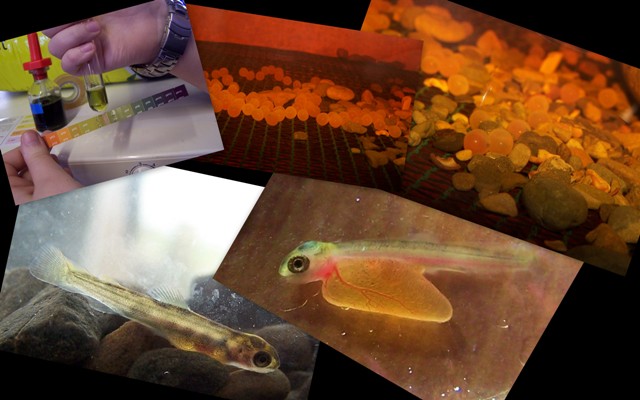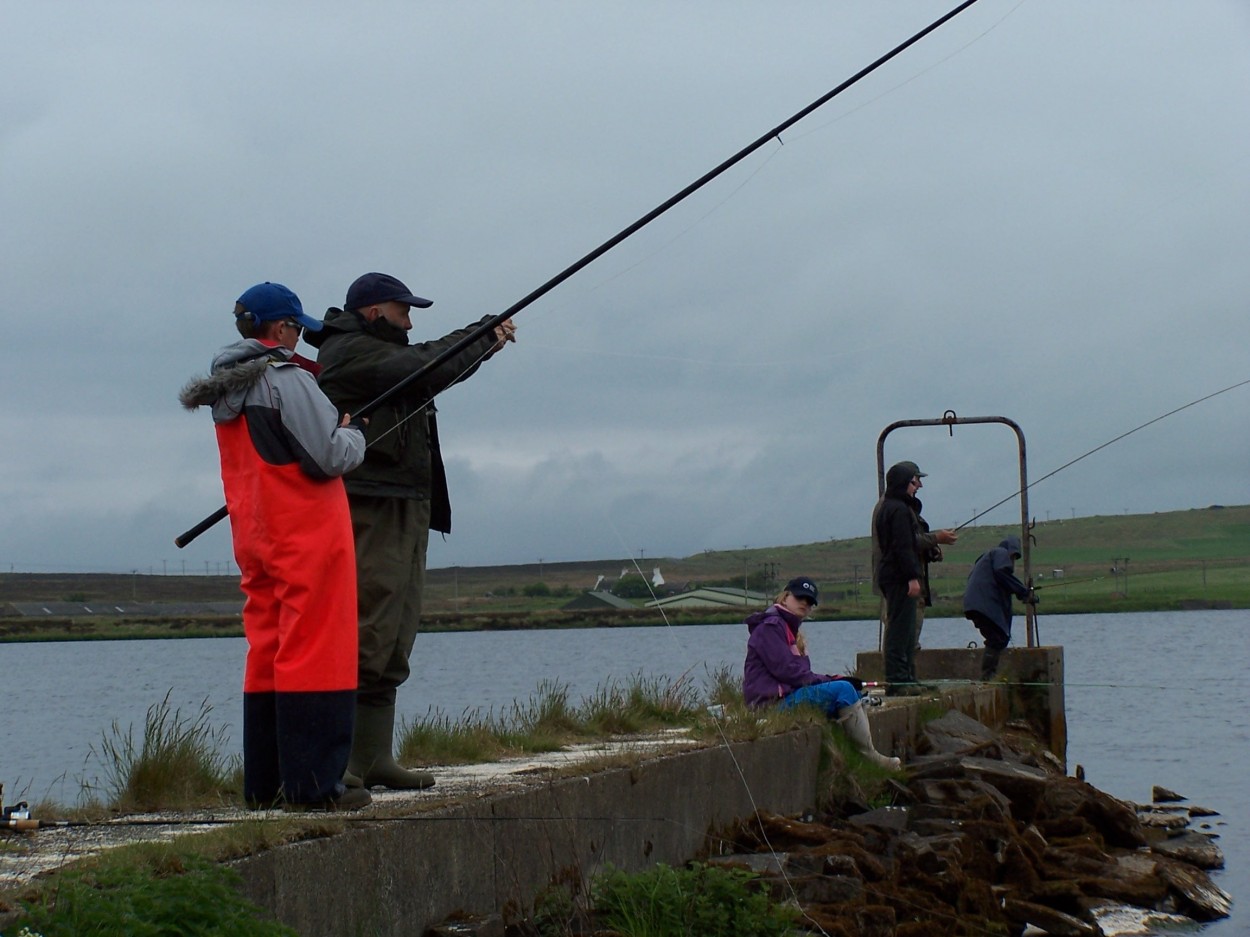I’m delighted to publish this report which Cameron Stout, the Class 2 teacher at North Walls emailed me. It was written by his pupils for the April issue of The Blether, “the newsletter of the community of Hoy and Walls” and when reading it, we can tell how much enthusiasm and commitment went into the project:

Away back at the beginning of Term 3 (January), Class 2 got some trout eggs from Jim Erskine so that we could take part in the Troot in the Shed project. Everyone was very excited about it since some of us did a similar project a few years ago and we were really looking forward to taking part in it again.
First of all we had to prepare a tank in the shed – the shed is best because it is at a cooler temperature. If the eggs and baby fish (alevins and fry) get too warm it can kill them.
We put the eggs in the tank carefully. We had to watch in case the eggs went white. That meant they had died. We were fortunate though, because not many of them died. Out of our total of 300, only about 40 didn’t survive. We think it’s possibly because they had to make an extra journey across to North Walls on the boat.
We had to check on the eggs frequently, recording the air temperature and water temperature, and whether any had died. If they had, we had to remove them from the tank within 24 hours.
As they grew, we noticed that their yolk sacs started to shrink. The yolk sac contains the food that they use when they are first hatched. At this stage, they are approximately 1.5cm in length.
They were very small and their eyes looked gigantic. They wriggled in the corners of the tank – probably trying to hide among the stones.
There is a microscope in the science room so we used that to examine them closely. It was fascinating to see them so close up.
When they got older, their colour turned darker and we noticed that their yolk sacs had almost disappeared. At that stage they start being called fry and they come up to the surface to look for food.
Almost at the end of the project we took a walk to the Ore Burn to release them. Everyone had a shot of scooping out a net with between 5 and 20 in it, and transferring them to a bag of burn water that we had at the ready. The reason we do that is so that there is not too big a change of temperature, and so that they do not fall in from too high a height.
We took great care handling the troot as they were very small.
Now that they are in the burn, the survivors will probably stay under the brig until they’re a bit bigger and then they will head to the sea.
We learnt about life cycles and we can now compare the trout life cycle to the human life cycle and other parts of nature.
We would like to say thank you to Mr Erskine and the Orkney Trout Fishing Association for preparing the whole project and involving us in it. We hope to do it again.









